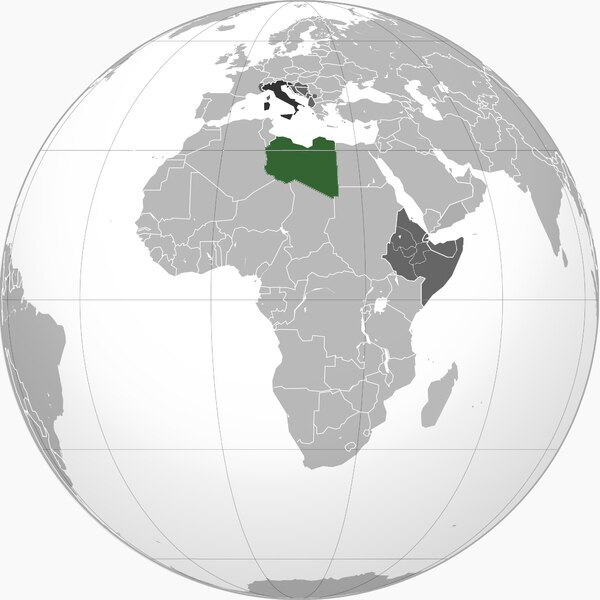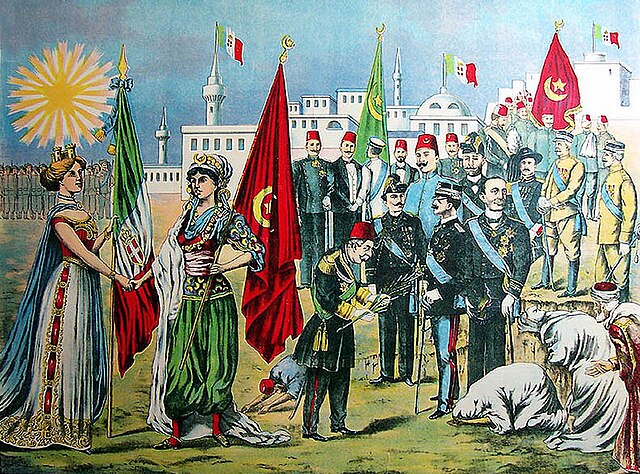The Second Italo-Senussi War, also referred to as the Pacification of Libya, was a conflict that occurred during the Italian colonization of Libya between Italian military forces and indigenous rebels associated with the Senussi Order. The war lasted from 1923 until 1932, when the principal Senussi leader, Omar al-Mukhtar, was captured and executed. The Libyan genocide took place during and after the conflict.
Senussi rebel leader Omar Mukhtar (the man in traditional clothing with a chain on his left arm) after his arrest by Italian armed forces in 1931. Mukhtar was executed in a public hanging shortly afterward.
Royal Corps of Eritrean Colonial Troops
Omar Mukhtar with Mujahidin
Meharists led by Amedeo D'aosta. Some Libyans fought in the Italian colonial troops.
Italian colonization of Libya
The Italian colonization of Libya began in 1911 and it lasted until 1943. The country, which was previously an Ottoman possession, was occupied by Italy in 1911 after the Italo-Turkish War, which resulted in the establishment of two colonies: Italian Tripolitania and Italian Cyrenaica. In 1934, the two colonies were merged into one colony which was named the colony of Italian Libya. In 1937, this colony was divided into four provinces, and in 1939, the coastal provinces became a part of metropolitan Italy. The colonization lasted until Libya's occupation by Allied forces in 1943, but it was not until the 1947 Paris Peace Treaty that Italy officially renounced all of its claims to Libya's territory.
Italian Libya Other Italian possessions Kingdom of Italy
Italy's representation of the takeover of Ottoman Tripolitania in 1911
Sheikh Sidi Idris al-Mahdi as-Senussi (later King Idris I of Libya)
Arrival of the first Italian locomotive in the harbor of Tripoli, 1912








